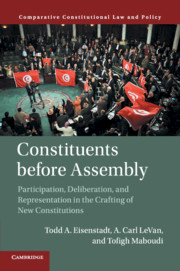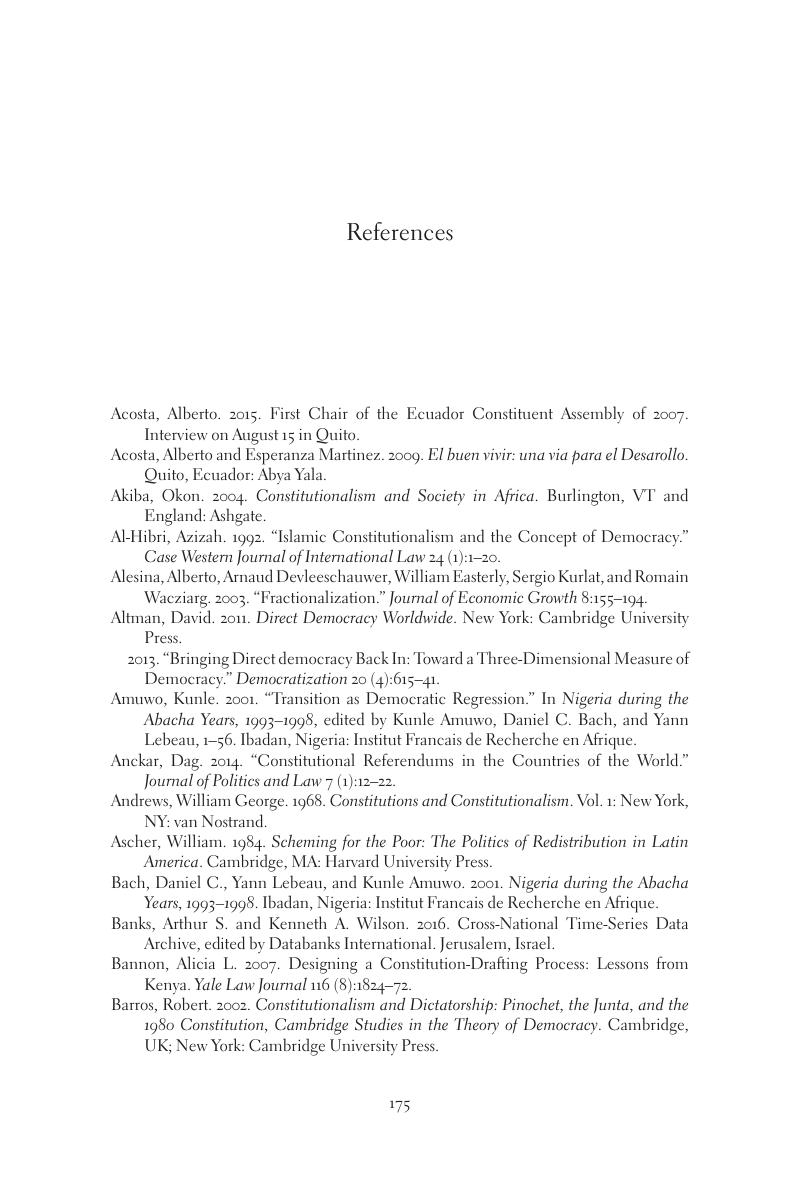 Constituents Before Assembly
Constituents Before Assembly Book contents
- Constituents before Assembly
- Comparative Constitutional Law and Policy
- Constituents before Assembly
- Copyright page
- Dedication
- Contents
- Figures
- Tables
- Introducing Constitutions as Political Process
- 1 A Call to Pens (Even If Not Mightier than Swords): How Context and Process Prevail over Content in Constitutional Change
- 2 Making the Constituents King: How Constituent Deliberation on New Constitutions Democratizes More than Mere Citizen Participation
- 3 Parchment Politics: The Importance of Context and Conditions to the Drafting of Constitutions
- 4 The Logic of “Top-Down” Elite Constitutionalism: How Imposed Processes May (But Usually Do Not) Produce Better Democracy
- 5 The Logic of “Bottom-Up” Constitutionalism: How Popular Processes Tilt the Odds in Favor of Democracy
- 6 Interest Groups Versus Individual Participation, and the Gap Between Ideal Constitutional Process and Real-World Practices
- Book part
- References
- Index
- References
References
Published online by Cambridge University Press: 08 July 2017
- Constituents before Assembly
- Comparative Constitutional Law and Policy
- Constituents before Assembly
- Copyright page
- Dedication
- Contents
- Figures
- Tables
- Introducing Constitutions as Political Process
- 1 A Call to Pens (Even If Not Mightier than Swords): How Context and Process Prevail over Content in Constitutional Change
- 2 Making the Constituents King: How Constituent Deliberation on New Constitutions Democratizes More than Mere Citizen Participation
- 3 Parchment Politics: The Importance of Context and Conditions to the Drafting of Constitutions
- 4 The Logic of “Top-Down” Elite Constitutionalism: How Imposed Processes May (But Usually Do Not) Produce Better Democracy
- 5 The Logic of “Bottom-Up” Constitutionalism: How Popular Processes Tilt the Odds in Favor of Democracy
- 6 Interest Groups Versus Individual Participation, and the Gap Between Ideal Constitutional Process and Real-World Practices
- Book part
- References
- Index
- References
Summary

- Type
- Chapter
- Information
- Constituents Before AssemblyParticipation, Deliberation, and Representation in the Crafting of New Constitutions, pp. 175 - 192Publisher: Cambridge University PressPrint publication year: 2017
